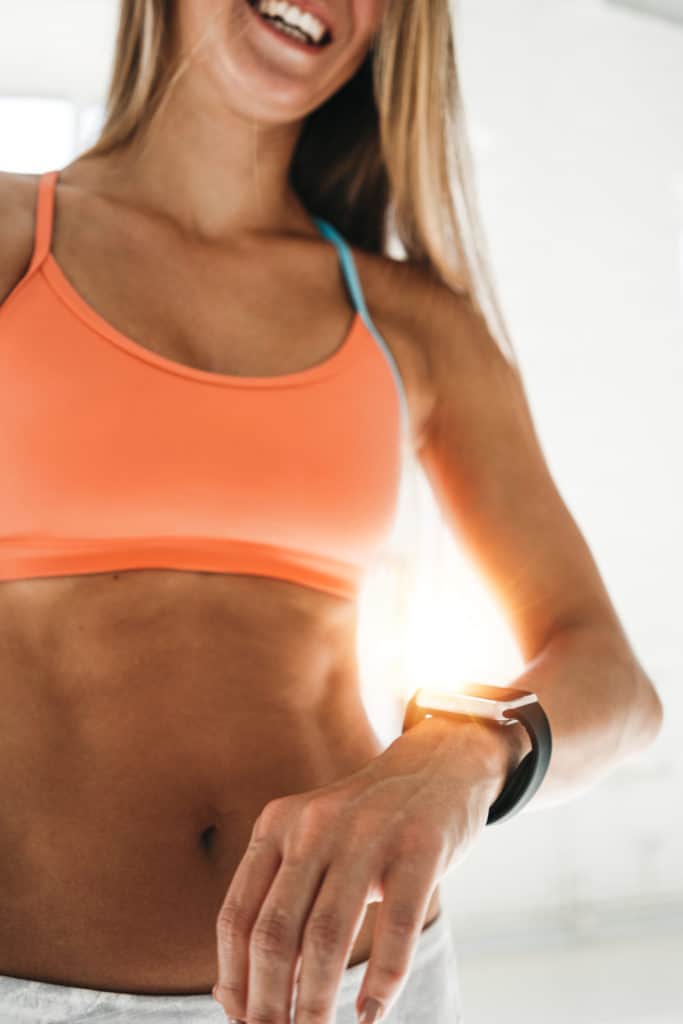What cannot be measured cannot be improved. This statement proves truer in fitness than in most areas of life. Knowing how to choose a fitness tracker gives you a starting point if you’re overwhelmed by weights, run times, and caloric measuring.
If you don’t have a goal weight, a jogging heart rate goal, or a set goal for lifting, you won’t get far.
Enter the fitness tracker. Everyone wears them, from executives to your local baristas. Fitness trackers come in all styles and configurations, and we’ll help you choose a fitness band for your goals.

How to Find the RIGHT Fitness Tracker
Many people choose activity trackers based on brand loyalty or celebrity endorsements. While you may still benefit from the functionality these trackers bring to your life, you can search smarter. Finding the best fitness tracker means meeting your unique goals.
Before you click “add to cart,” make sure you’ve tried on the activity tracker in a vendor’s physical store. You can find fitness wearable for small wrists, hypoallergenic straps, and straps that you can’t detach from the body of the tracker. You can also take advantage of clip-on trackers, footpods, hybrid smartwatches, and smart rings.
Make sure your tracker has a built-in heart rate sensor. Heart rate sensors help the device estimate your calorie burn during workouts, which matters when you want to lose weight. You can structure your sessions more effectively with this feature instead of relying on step counts and exercise app indicators.
What Can Fitness Tracker Measure?
The in-depth measurements of these trackers answer the most frequently asked question among fitness enthusiasts: Is fitness tracker worth it?
If you buy a tracker from a reliable brand, they can last for years. They’re water-resistant, scratch- and dust-resistant, and easy to clean.
At a minimum, fitness tracker can measure:
- Step count
- Calories burned
- Running distance covered
- Heart rate
- Sleep times
- Blood oxidation
- Active time
Most of them come with an app you can install on your phone, where you can browse historical data of your physical activities. This feature makes them an excellent comprehensive health solution. You’ll know when you’re slacking, remaining sedentary, or pushing yourself on your workouts.
Fitness wearable can also tell you if you have potential health issues. For example, if your blood oxidation gets too low on workouts, you might have hypoxemia. This condition involves having a lower than average oxygen response in your blood, and it’s a common condition among people who smoke. If you notice sudden spikes in your heart rate for no apparent reason, you may have an arrhythmia, which is a mostly harmless condition where your heart beats irregularly.
Abnormal readings may indicate that you should see a medical professional to help you avoid problems later.

Why Choose Fitness Tracker?
Fitness trackers have become more sophisticated in the last few years compared to fitness apps for smartphones. They can track non-exercise activity thermogenesis (NEAT) (1), which includes exercise you do outside of your formal workout.
These exercises range from walking your dog to vacuuming the floor to washing your car. NEAT influences your overall health, wellness, and weight control.
Note that a fitness tracker’s measurements of NEAT are not accurate to a medical level, but with the technology available to consumers, it’s the closest we can get.
How to Get the Most from Your activity Tracker
Have an Action Plan
To lose weight, get fit, and maintain your level of fitness, you need to set goals. How much do you want to weigh at this time next year? What parts of your body do you need to work on?
Fitness trackers can tell you how far you’ve progressed. Seeing that extra push-up, pull-up, or extra mile run, encourages you to keep going.
Set a Goal and Measure It
Do you have a weak upper body? Maybe you should start your fitness journey with push-ups and pull-ups. You don’t have to start with a full set right away. Ease yourself into a routine by doing half push-ups and assisted pull-ups. Always set a modest rep goal.
Fitness trackers help you visualize your progress. Once you’ve reached your goal, you can set a new one to improve even further.
Track Your Activity and Compare it to Your Intake
You should track the calories you burn and the quality of calories you consume. Look up your macros online and see how much fat, protein, and carbs you need to maintain optimal health. Make a meal plan with foods you like, so you don’t create a deprivation-based diet.
When you determine your diet, you can compare the calorie reading on your activity tracker to the calories you’ve consumed. This tracking method offers a no-nonsense way to gauge whether you’re genuinely losing weight.
Enter Biometric Data
Fitness trackers can suggest targets catered to you. For example, a fitness tracker for women can calculate new data for stress when you’re pregnant, as well as look stylish on your wrist.
Enter your weight, height, age, and sex, on the tracker for accurate real-time readings.
Wear It Correctly
Companies design fitness trackers for you to wear on your wrist for long periods. They come in styles without displays, with touchscreens, with heart rate sensors, and with simple interfaces. To make the most out of yours, read and follow the instructions included.
Choose a fitness tracker that gives you the features you need
Fitness trackers are a great companion to have on your fitness journey and a practical accessory when you’re not exercising. If you want to improve your strength, diet, and health, you should measure how much activity you get inside and outside the gym. Knowing how to choose a activity tracker is like knowing how to choose a smartphone: you want one that gives you the features you need. Fitness tracker fast-tracks your improvement by letting you know your number of reps, miles traveled, active times, and measure the quality of your sleep at night. They are powerful instruments for improving your quality of life. The journey to your next fitness chapter begins when you start tracking it.
